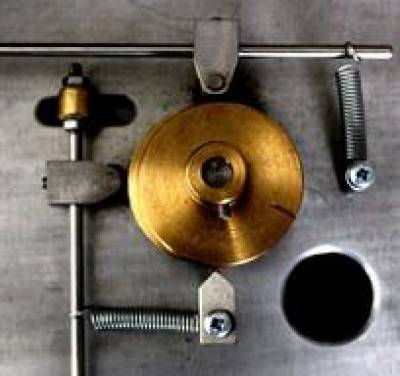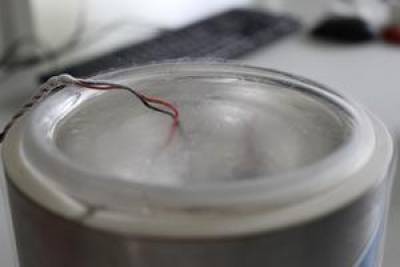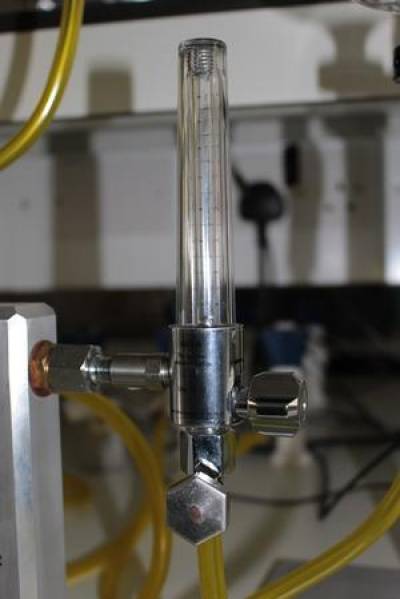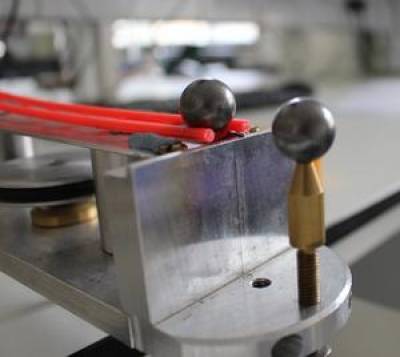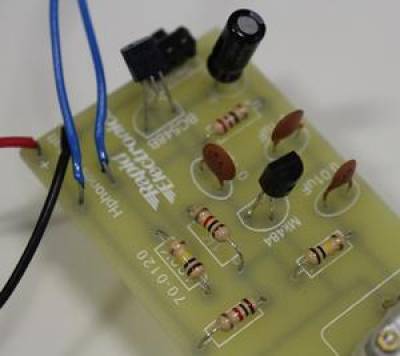Students can perform a number of experiments and skill-of-hand exercises, which are designed to introduce them to laboratory practice and laboratory record-keeping. Initially these activities involve following a script, supplemented by in-lab briefings and on-line tutorials. The level of prescription and direction is gradually reduced as the students progress through the year, allowing them to improvise and take greater control over the experiments. This process continues in the 2nd and 3rd years, and helps prepare students for a research environment.
Mechanical Resonance
Resonance is a phenomenon that is found in many different guises – from the wobbling of the Millennium Bridge to the ability of a radio to tune in to a particular station. Understanding resonance is crucial for scientists and engineers. Luckily, a damped system being forced to resonate – such as a brass cylinder rotating in a bath of oil – can be described using a very simple mathematical model. But how closely does this model really reflect what is going on? Can we investigate it adequately using a simple piece of apparatus on the laboratory bench?
Latent Heat
The term “latent heat” was first used by Joseph Black in the 1760s. Latent heat of vaporisation is the amount of heat required to vaporise unit mass of a liquid at its boiling point, with no change of temperature.Black did this by comparing the time taken to boil a vessel of water dry, with the time taken to bring it to boiling point, assuming a constant rate of heat flow. Nowadays we have more accurate ways of doing this – heating the liquid electrically while measuring its rate of mass loss – but there are still many complicating factors to consider.
Specific Heat of a Gas
The
ratio of the specific heats of a gas at constant pressure and constant
volume (γ) is an important property in kinetic theory which can be
linked to the molecular structure of the gas. By assuming an ideal gas
which expands and contracts adiabatically, we can measure this ratio,
and hence make inferences about the gas’s properties at the microscopic
level. This measurement requires nothing more than a container of gas, a
ball bearing, a stopwatch and a pressure gauge. How closely does the
result compare with theory? Can we use it to compare classical kinetic
theory with quantum mechanics?
Conservation of Momentum
What happens when two objects collide? Any physics undergraduate can tell you that linear momentum will be conserved, and kinetic energy may also be conserved if the collision is elastic. But is it really that simple? How closely do our theoretical formulae approach what happens in the real world? What other factors must be taken into account?
AM Radio
This
working radio can be constructed in one lab session from a printed
circuit board and 16 components. This “skill-of-hand” task gives
students a chance to learn soldering techniques, and reinforces the
theory they will learn in their mechanics (yes, mechanics!) and
electromagnetism courses. And at the end of the session, the students
get to take the radio home!
 Close
Close


